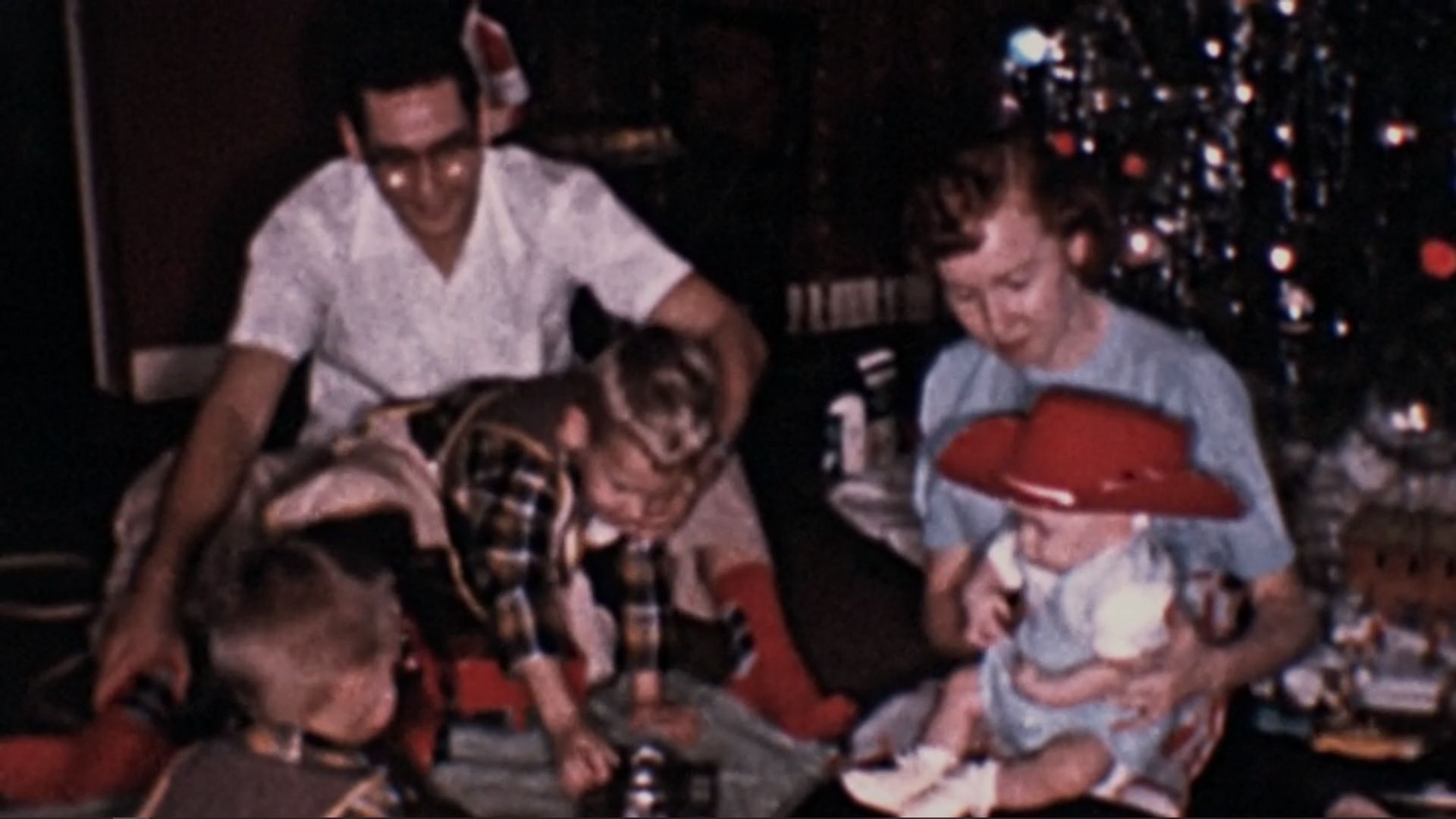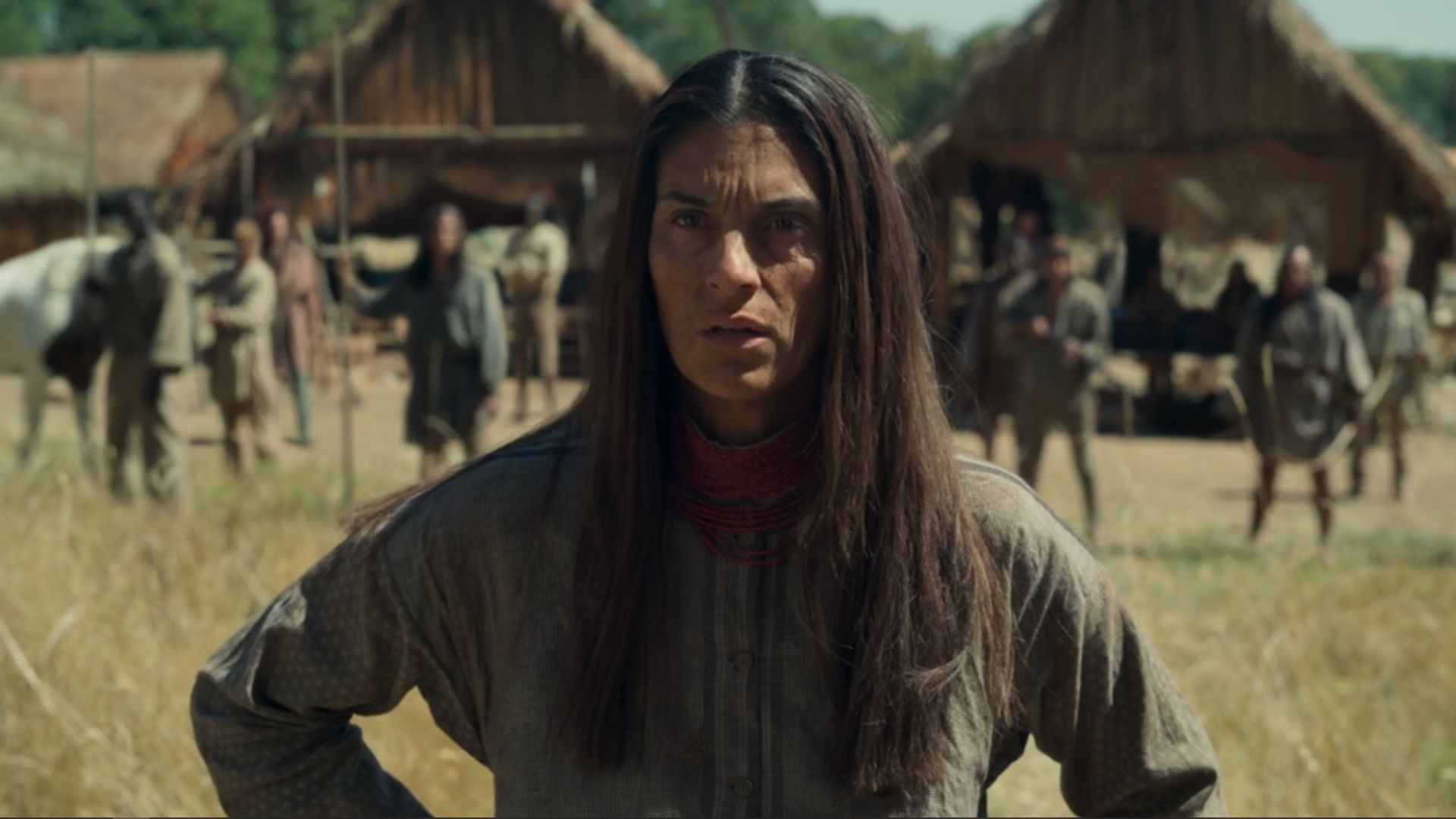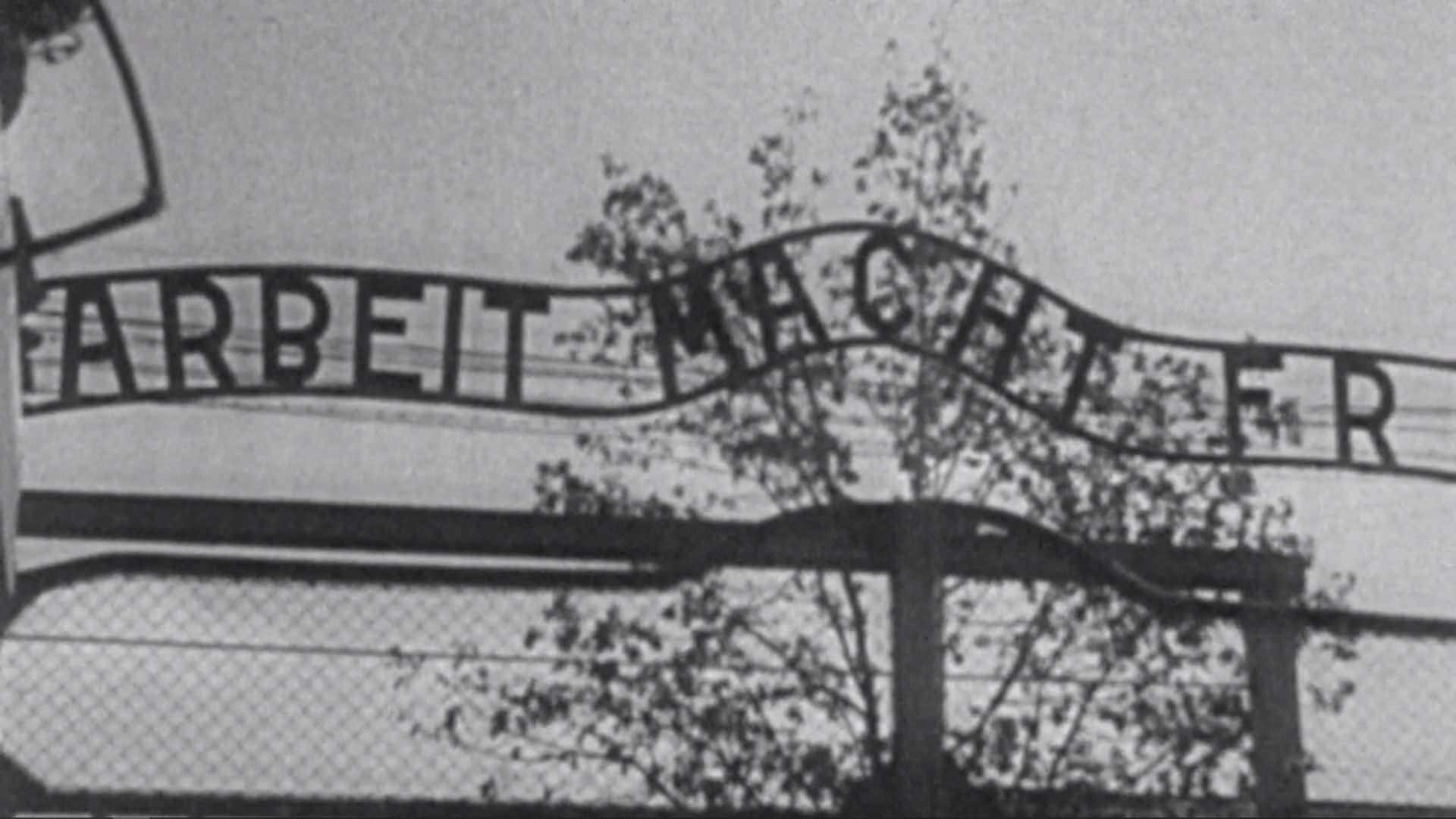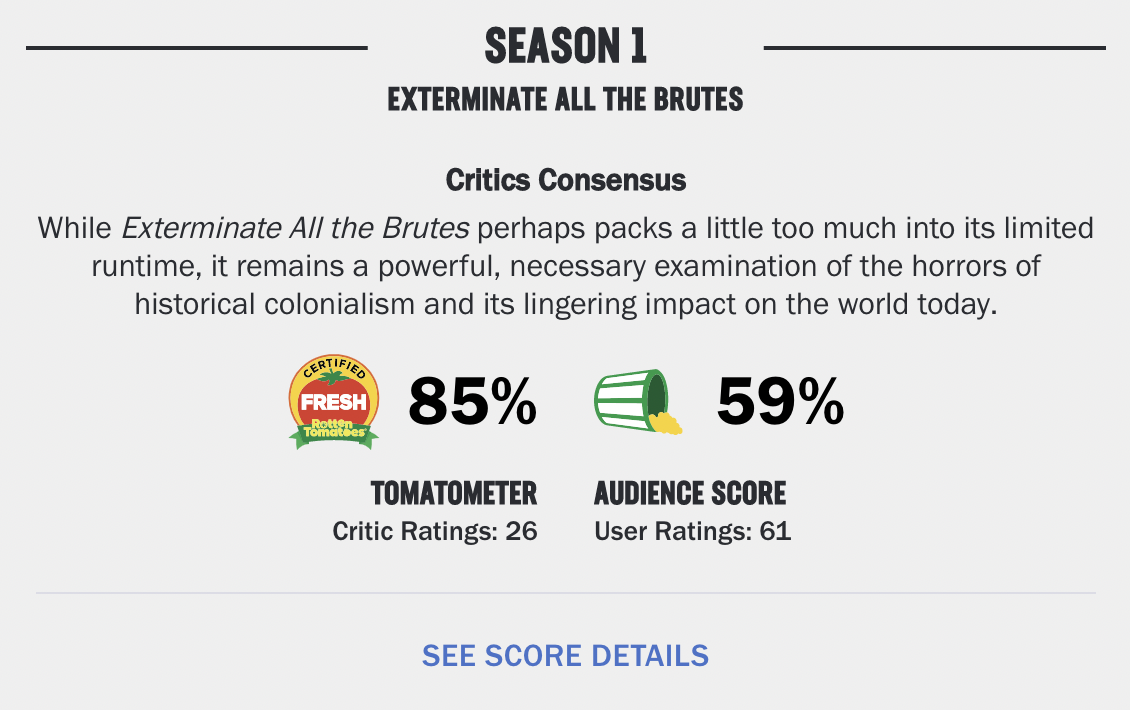Oscar-nominated filmmaker Raoul Peck’s anti-West documentary is a sick retelling of history seeking to portray white Europeans as Planet Earth’s greatest monsters. Despite a pretense of originality, HBO’s four-episode miniseries regurgitates the same, tired, anti-white and anti-American blood libels common in far-left discourse for nearly half a century.
Peck based the documentary on just three sources: Sven Lindqvist’s book also titled Exterminate All the Brutes, which claims that white Europeans invented the concept of genocide; Roxanne Dunbar-Ortiz’s An Indigenous Peoples’ History of the United States, which recasts American history as the deliberate genocide of the Native Americans, and Howard Zinn’s 1980 A People’s History of the United States, which revises U.S. history by looking at it through a Marxist worldview.
Peck seeks to deconstruct the traditional view of Western history in favor of one that fetishizes the suffering of native peoples at the hands of white Europeans. He claims that by referring to the arrival of Christopher Columbus in the New World in 1492 as a “discovery,” we erase the entire history of indigenous people until that point.
Incoherence.
From a technical perspective, the documentary has a few attractive sequences. But the final product is extremely disjointed, lurching from subject to unrelated subject with little semblance of order. The aim appears to be shocking the viewer, rather than educating them.
Even the far-left Daily Beast website called “Peck’s experimental impulses, which are at the very least captivating,” eventually incoherent.
Actor Josh Hartnett portrays a white everyman leading the removal of Seminoles from Florida, overseeing laborers at a rubber plantation in the Congo, and – in an especially bizarre sequence – a witness to black slave hunters taking white children away in chains. Cunningham finds these sequences odd as well, writing: “…it’s the dramatizations in particular, mostly interactions between white settlers and Black and Indigenous people, that feel especially fruitless and misplaced within the documentary.”
These dramatic sequences are extremely over-the-top, as Peck hits us with the theme of “white man bad” with all the subtlety of a hydraulic battering ram. This theme is established early.
Christmas As White Supremacy.
In episode one, we are treated to scenes of a classic American Christmas: happy families shopping, ice skating, and opening gifts under brightly lit trees. Over these cheerful scenes, Peck ominously quotes a Swedish neo-Nazi who said that “all Jews and Negros ought to be exterminated.”
Peck clearly wants to build an association in the mind of the viewer between innocent, white children enjoying Christmastime and a racist, genocidal ideology. He makes generous use of such juxtapositions throughout the four episodes.
In one of the most egregious sequences, images of smiling white people having fun are interspersed with images of smiling Nazis engaged in the same activities.
Peck returns to several themes throughout the documentary. The title Exterminate All the Brutes comes from Joseph Conrad’s Heart of Darkness, published in 1899, in which the narrator tells the story of a journey upriver into the heart of the Congo, and the loss of civilization on the way. The line itself is spoken by the character Kurtz, a man who went insane in the jungle and made himself king of a primitive tribe.
According to Peck, this philosophy is not simply the ravings of a literary madman, but rather the motivating factor for white Europeans in their conquest of the globe.
Crockumentary.
When one hears the word “documentary”, one hopes for a well-researched presentation of a given subject. Peck’s film is the opposite.
He spends four hours lecturing on the evils of white Europeans, explaining how they committed genocide against indigenous populations throughout the world.
If you wait four hours to hear the name William Wilberforce – the English politician who spent his life fighting for the abolition of slavery – or of the 600,000 Americans who died to end slavery in the United States, you will be disappointed.
Not only does Peck never once mention the Civil War, but he barely acknowledges that the United States banned slavery at all. In fact, he appears to believe that never happened.
Near the end of episode four, he instead claims that slavery continues in the form of institutionalized racism.
Much time is spent “exposing” the evils of slavery, the brutality of the Belgian Congo, and of the mistreatment of Native Americans by US settlers – conclusions that are universally acknowledged by all sides today and have been for some time.
But Peck seeks to build on this consensus with a house of falsehoods, ignoring global historical context including the Killing Fields of the Khmer Rouge; Julius Caesar’s conquest of Gaul; and Genghis Khan, the Mongolian warlord personally responsible for millions of deaths. The Armenian genocide, in which Turkish Muslims exterminated a million Armenian Christians, is barely mentioned.
The racist focus on white crimes and Western history only breaks for a brief mention of the Rwandan Genocide. There is no talk at all about the Great Leap Forward of Communist China, nor of Stalin’s purges in the Soviet Union, each of which resulted in tens of millions of deaths.
By ignoring genocides committed by non-white populations, as well as genocides committed by white people against other white people, Peck leads the viewer to believe that white people are solely responsible for the very concept of genocide.
Near the end of episode two, Peck explains why he believes that white Europeans and Americans are uniquely evil:
“Contrary to what has been asserted about the birth of the United States and its domination of the continent, it was neither superior weapons, nor technology, nor a superior number of settlers, nor disease, that is to say, ‘not guns, steel, and germs,’ that can account for it. The determining factor of this domination was the willingness to eliminate whole civilizations of people in order to possess their land.”
To reinforce the racism, Peck goes out of his way to exclusively portray black and indigenous people as innocent and noble throughout all human history. In an early, dramatic scene, a Seminole woman grants sanctuary to escaped slaves. She confronts the American officer sent to retrieve them, boldly saying, “You steal land. You steal humans. You steal life. What kind of species are you?” “This kind!” he retorts, shooting her in the head.
In reality, Native Americans often made slaves of captured prisoners, and there were even some slave owners among the natives who walked the Trail of Tears to Oklahoma. This kind of nuance was clearly too complex or too inconvenient for Peck.
Holocaust Minimizing Goes Mainstream.
One of the main theses of the documentary (and of Lindqvist’s book upon which it is based) is that the Holocaust gets too much attention because it was committed against other Europeans, rather than against black or indigenous peoples. Lindqvist and Peck claim that the Germans were scapegoated for the invention of genocide, which (they claim) was really a legacy of all white Europeans.
Paraphrasing from Lindqvist’s book, Peck says, “The air Hitler and all other western people in his childhood breathed was soaked in a conviction that imperialism is a biologically necessary process which according to the laws of nature leads to the inevitable destruction of the lower races.”
Peck uses imagery of the Nazi death camp at Auschwitz throughout the documentary as a visual shorthand for whichever genocide he happens to be talking about at the time.
Killing Christianity.
One of the common themes woven throughout the documentary is the responsibility of Christianity for the genocide and extermination of native peoples. He tells the story of Bartholomew de las Casas, a Spanish monk who objected to the enslavement of Native Americans and suggested importing African slaves instead.
A dramatic scene ensues where the Pope suggests that the natives at least have souls, in contrast to the African “brutes”.
Peck says atrocities committed by white Europeans against darker-skinned peoples during the Crusades were the template for later European genocides. He neglects to say anything about the Muslim conquests that prompted them.
“The road to Auschwitz was paved in the earliest days of Christendom, and this road also leads straight to the heart of America,” Peck says.
On the other hand, he never once brings up how Christianity motivated men like Wilberforce, John Newton, Abraham Lincoln, Frederick Douglass, and Martin Luther King Jr. not only to work to abolish slavery but also to treat black and indigenous people with dignity. Douglass, an escaped slave and one of the great orators in American history, was not only a Christian but knew the Bible well enough to condemn slave owners for failing to live up to its tenets.
Peck’s antipathy toward Christianity seems to stem from an incident that occurred when he attended a Jesuit school in Haiti. After a schoolyard fight with another boy, he found himself sent to the headmaster’s office.
He explains he had expected to be made to shake hands with his rival and then move on but was shocked to be whipped instead. This incident left him cynical, and from then on, he trusted neither white people nor Christianity.
Peck paints white people and Christians with a brush just as crude as the racist caricatures he bemoans.
In one dramatic sequence near the end of episode one of Exterminate All the Brutes, a white priest tells Congolese laborers the more they suffer in this life, the more joy they will receive in heaven. His sermon is interrupted by a white overseer who brutally beats one of the laborers before dragging him outside and shooting him in the head for no apparent reason. In case you missed the symbolism, Peck frames the shot to include a large wooden cross.
Despite decrying the very idea of nations and borders as a European social construct that leads to war and genocide, Peck is proud of his own heritage.
He tells the story of the Haitian Revolution, where former slaves revolted against their French masters. He proudly explains that the Haitian people defeated the force that Napoleon Bonaparte sent to regain the country, and then draws a straight line from there to France’s sale of Louisiana to the United States. Peck claims that the US owes a debt to Haiti for prompting this acquisition of land. (While the Haitian revolt did play a part in Napoleon’s decision to abandon his New World territories, it is overmuch to give Haiti all the credit.)
The strangest (and fakest) dramatization in the movie is a scene set after the 1890 massacre at Wounded Knee, where more than 250 Lakota men, women, and children were killed by US troops. General William T. Sherman presides over a press conference as a Trump-like figure, mocking the dead Indians and accusing reporters of being fake news. (In reality, General Sherman was retired at the time of the massacre and would die of pneumonia just six weeks later.)
This scene is just another example of the sloppy and heavy-handed propaganda that permeates the entire documentary series.
5 Stars From the Woke Establishment.
Naturally, Peck’s film has been almost universally praised by left-wing critics. But the public audience remains divided. At the time of this writing, it has an 85 percent critical rating at the review aggregation site Rotten Tomatoes, while user ratings rest at 59 percent.
Audience members either love or hate the film, with five-star reviews calling it a “masterpiece” that “should be mandatory viewing,” while one-star reviews point out its skewed depiction of history, its portrayal of white people as uniquely evil, its over-the-top dramatizations, and its barefaced propaganda.
One user, Kurt H., notes: “What it cannot find with actual historical primary sources or footage, it makes up with literal filmed acting in order to get characters to say the evil things it needs them to say (because true history fails the filmmaker on that front).”
This is underscored by the less than subtle Marxist messaging throughout the documentary.
Matter of Falsehoods.
In episode two, Peck follows Zinn’s example in deconstructing American myths about Christopher Columbus.
He ominously states that 90 percent of the native population would die in the century after Columbus’s arrival in the New World as he shows us pictures of bloody massacres. Left unstated is the historical consensus that most of these deaths were due to diseases such as smallpox to which Native Americans had no immunity. A tragedy, to be sure, but not the deliberate genocide Peck implies.
Zinn’s 1980 work recast the entirety of American history through a Marxist lens – evil white capitalists oppressing innocent indigenous people.
According to Zinn, the American Revolution, the Declaration of Independence, and the Constitution were not good things that helped advance the cause of freedom and liberty in the world, but corrupt institutions that were used by wealthy white men to oppress everyone else. Peck calls Howard Zinn the most decisive historian of the century, and it is hard to argue with that.
The entire edifice of mainstream American historiography was built upon Zinn’s work, which became the precursor to works such as the 1619 Project, Lindqvist’s book, and this documentary itself.
This illustrates the greatest failure of the documentary.
Condescendingly Derivative, or Derivatively Condescending?
Every word of Peck’s narration drips with condescension, as if he is telling us something nobody has ever heard before.
He seems to think he is speaking to an audience from 1950 that has been raised on John Wayne movies, stories about Davy Crockett, and anecdotes about George Washington chopping down a cherry tree. He talks as if these “revelations” of European atrocities, America’s genocide of Native Americans, and the evils of slavery are new information.
Three generations of schoolchildren have grown up reading nothing but the supposed evils of white people in their history textbooks. Howard Zinn’s book History has been required reading for many teachers completing their degrees since the 1980s. Peck’s documentary breaks no new ground; rather it is yet another retread of the same tired “white man bad” tropes that have been dominating academia and mass media for decades.
This banality might be its most pernicious aspect.
Documentaries like this, along with (re)educational tools like the 1619 Project, are designed to rewrite American history before our eyes. The goal of these projects is not to be objective, but to specifically demonize one group of people beyond all others.
Neither is it simply about casting blame on the dead; modern conservatives are tainted as well.
In episode four, Peck compares modern 2nd Amendment activists to 19th century Indian hunters, saying, “But it is a fact that the original mandate of the Second Amendment was to empower and authorize settlers to arm themselves to kill Indians and to control enslaved Africans.” He offers no supporting evidence for this “fact,” rather he simply assumes that it is self-evident.
A few predictable minutes later, Peck compares President Trump and other nationalist politicians such as Marine le Pen of France and Geert Wilders of The Netherlands to Adolf Hitler and the Nazis.
“We have been there before,” he says.
The implication is clear: leaders such as Donald Trump, and those who support him, must be stopped before we instigate another holocaust, another genocide of nonwhite peoples.
The conclusion of Exterminate All the Brutes is an extremely twisted vision of history, one in which white Europeans and their descendants are uniquely evil, with few if any redeeming values. In making this documentary, Raoul Peck engages in precisely the same dehumanization of a group of people for which he condemns the eugenicists, scientific racists, and Nazis of a century ago.
Peck complains American discourse is no longer driven by historians and thinkers but has become the domain of pundits and entertainers. “No proof, no arguments are necessary,” he laments.
Perhaps he should look in a mirror.






